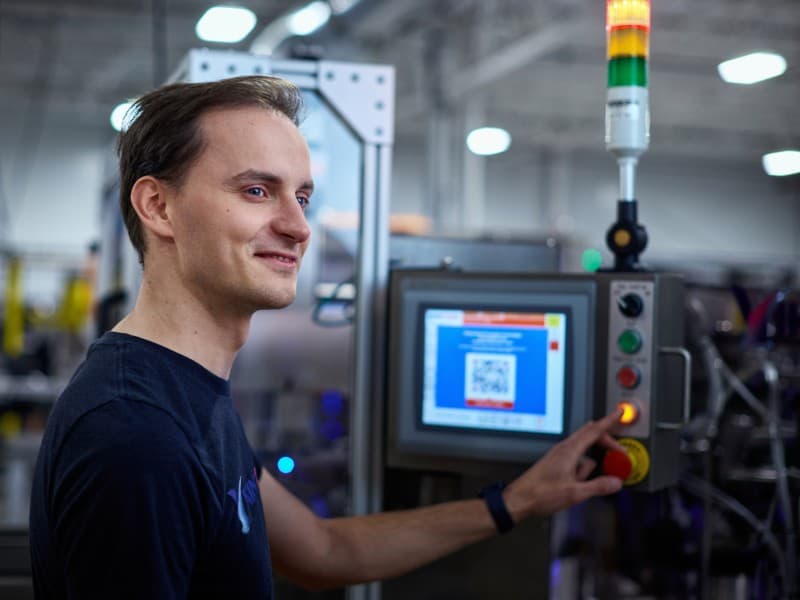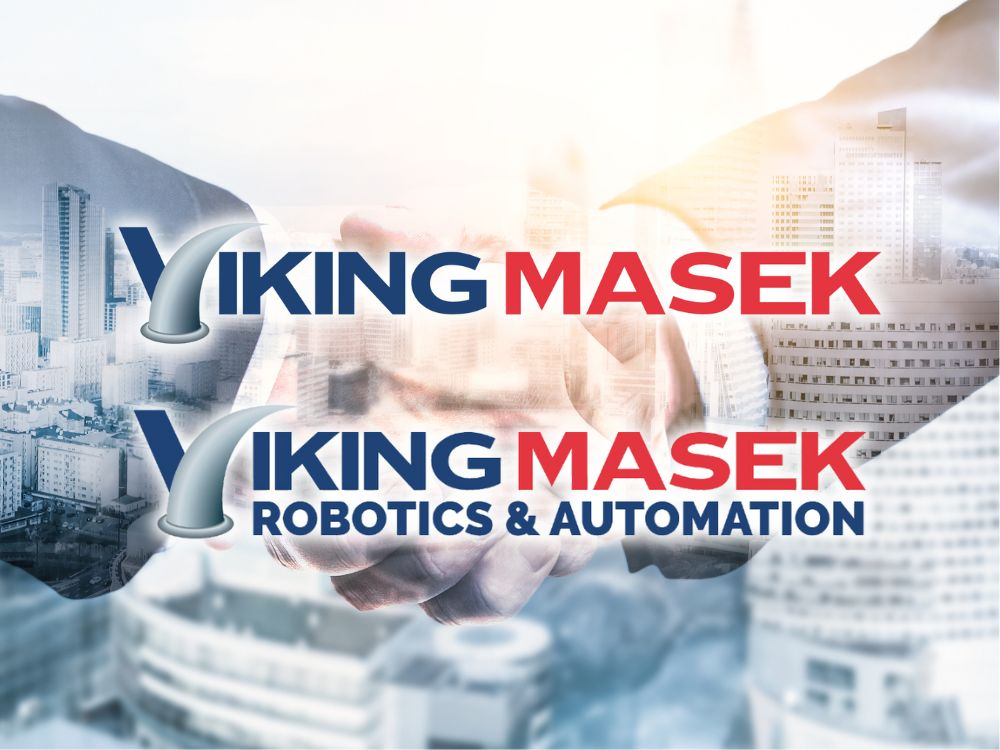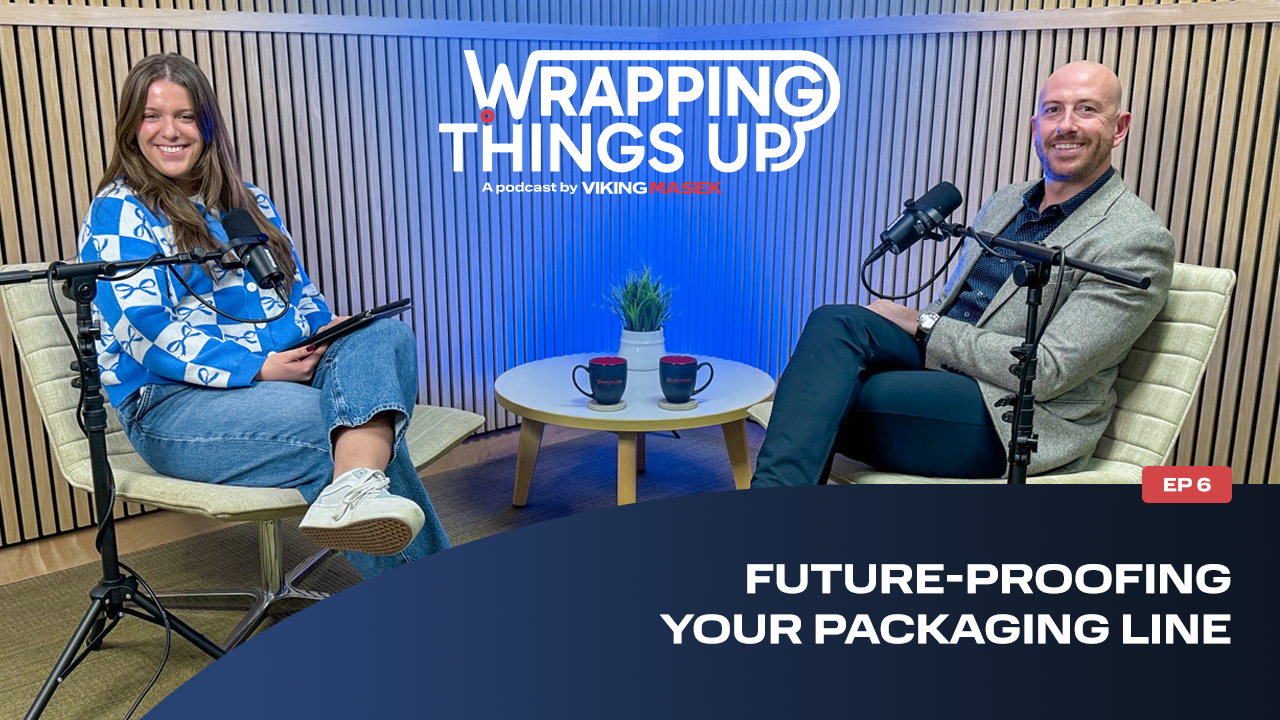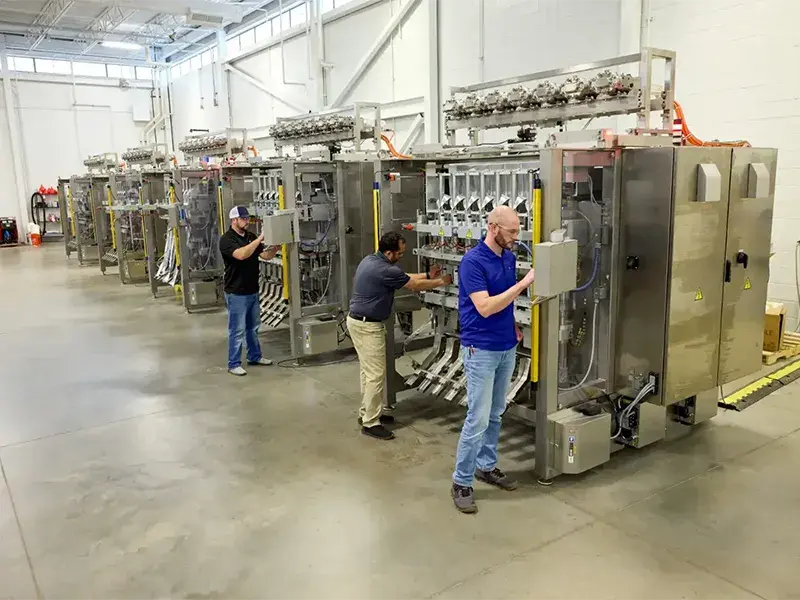Automation Myths Vs. Facts: Why “It Won't Work For Us” Is Often Wrong
By Jordan Miller on August 12, 2025

“We’ve always done it this way” might be the costliest phrase in manufacturing today. While one company’s dusty, labor-intensive packaging line limps along, competitors are cutting labor costs, reducing errors, and scaling production without adding headcount. Yet many operations leaders still believe their products are “too sensitive” or “too difficult” for automation.
The resistance isn’t irrational. It's rooted in real concerns about investment risk, implementation headaches, and the horror stories that travel quickly through industry networks.
As GM of Customer Care at Viking Masek, Jordan Miller, shared on our Wrapping Things Up podcast, he’s seen it time and again:
- A plant manager assumes automating packaging means sacrificing flexibility
- An engineer worries their crumbly or dusty product won’t run cleanly
- An operations leader fears their team won’t be able to handle the new tech
These obstacles can stall innovation, create decision paralysis, and ultimately cost more than a smart investment in automation ever would.
So here’s an unpacking of the biggest misconceptions we see — and how the right approach can turn hesitation into high-performing, high-confidence packaging operations.
Myth #1: Automation is One-Size-Fits-All
Trying to do too much with a single system is one of the most common missteps. It’s understandable — leadership wants a future-proof solution. But too often, a kitchen-sink approach results in bloated specs, constant changeovers, and a machine that struggles to excel at anything.
“They want to package everything under the sun, at all sorts of speeds.”
— Jordan Miller, GM of Customer Care, Viking Masek
The result? A system that underperforms across the board.
Instead, the most successful engineers narrow the focus. They prioritize the product or SKU that causes the most pain, design a solution around it, and build from there. You’ll often go farther — and faster — by scaling in phases.
Pro tip: The best automation strategies are phased. Start with a single, high-impact use case, validate, and scale with confidence.
Myth #2: It’s Too Complicated for My Team
Engineers are right to ask, “Will my team actually be able to run this?”
That concern often stems from experiences with legacy equipment or poor onboarding. But today’s automation systems are increasingly designed for simplicity and real-world conditions — including high turnover, limited training windows, and lean operations. But as we’ve said before:
“We teach five-year-olds to use iPhones. Packaging machines should be just as intuitive.”
Modern automation isn’t about creating complexity. It’s about removing it. With simple, intuitive HMIs, operator-focused training, and smart system design, today’s packaging tech is built to perform in environments tackling challenges like labor shortages and evolving employee skill sets.
If your automation solution isn’t designed for real people on real production floors, it’s not the right solution.
Myth #3: I Don’t Need Help — I Know What I Want
Engineers tend to do their homework. By the time you’re talking to an equipment supplier, you probably have a good idea of what you think you need. But even the most experienced teams can benefit from an outside perspective — especially when it comes to integrating with existing lines, adapting to operator needs, or solving for long-term performance, not just short-term specs.
Rigid thinking can be just as limiting as fear. When a customer kicks things off with a locked-in equipment request, the conversation risks skipping over critical context — like product characteristics, staffing realities, line integration, or performance goals.
“We don’t know what you don’t tell us.”
That’s why consultative conversations are essential. The best outcomes come when both parties are transparent: no hidden agendas, no one-size-fits-all answers. Many of the most successful partnerships begin not with a machine request, but with a conversation about goals, constraints, and unknowns.
Myth #4: Testing & Validation Are Optional
A polished demo can be compelling. But it’s not proof. Real-world success depends on real-world testing and validation — with your product, your containers, and your specific challenges.
Look for an automation partner with in-house testing capabilities that allow teams to validate equipment before final spec. Whether your product is dusty flour, static-prone matcha, or crumbly aged cheddar, nothing builds confidence like watching it run successfully.
Myth #5: Automation Can’t Work for My Product
Engineers working with irregular or difficult products have every right to be skeptical. They know better than anyone how easily certain materials can jam equipment, create waste, or blow throughput expectations.
But that’s exactly why customization and testing matter.
Common “problem products” include:
- Lightweight or free-flowing powders (matcha, protein, greens blends)
- Crumbly, irregular shapes (aged cheeses, frozen meats)
- Dusty products with airborne particulate (flour, spices)
These products are difficult. They do present specific challenges. But that doesn’t mean they’re impossible — especially when your automation partner is drawing from proven experience.
Smart tooling, tailored filling systems, and line adaptability can make automation accessible to even the fussiest materials. Our engineers often modify fill systems, adjust sealing temps, and create product-specific tooling to ensure the line works — not just in theory, but in motion.
Pro Tip: For Better Outcomes, Ask Better Questions
The questions you ask your packaging automation partner can set the tone for the entire engagement. Leading with questions focused only on speed or budget can steer the conversation toward surface-level specs instead of deeper, solution-focused understanding.
Instead of leading with: “How fast is the machine?” consider asking:
- What throughput can I realistically expect with my product?
- How will you help us validate performance?
- What kind of operator training is included?
- What do other customers with similar products do?
- How adaptable is this for future formats?
- What happens if something doesn’t work as planned?
The key is to shift the mindset from spec-shopping to solution-finding, and to shape a collaborative conversation that leads to better-fit systems and fewer surprises post-installation.
The Future of Automation: Push a Button, Get Results
Automation isn’t just advancing. It’s also simplifying. The industry is shifting toward solutions that require less guesswork, less manual tweaking, and less friction.
The goal? Make packaging automation accessible to teams of all sizes and skill levels.
“The dream is to walk up to your system, push a button, and watch it run.”
It’s not about eliminating jobs; it’s about elevating them. Automation offloads repetitive tasks so teams can focus on value-added work. Engineers get time back to optimize and improve systems and processes, while frontline teams are empowered to solve problems and keep things moving.
Are Misconceptions Costing You More Than Machines Might?
Automation doesn’t need to be intimidating. But it does need to be approached with clarity, trust, and a partner who listens first.
The longer you delay automation because of fear, the more you stand to lose: time, labor, output, and opportunity.
You don’t have to be the expert on everything — just open to asking better questions. And when you're ready to put the myths to rest, Viking Masek is ready to help.
Want to feel more confident navigating your first automation investment?
Download our free Packaging Machine Buyer's Guide for practical insights and tips tailored to packaging engineers and operations leaders.
Related Posts

Unleashing the Power of Partnership: How Viking Masek is Revolutionizing the Packaging Industry

Why Future-Proofing Should Be Part of Every Automation Plan
